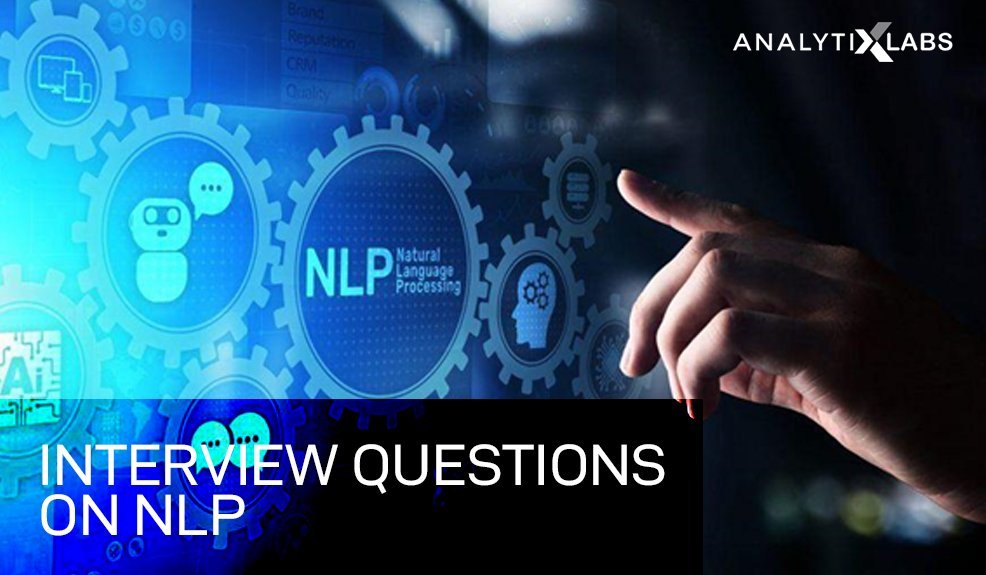Introduction
Natural Language Processing acts as a prime medium of communication between humans and machines. It enables various types of machines to comprehend. The languages which are spoken by humans. As such, the main aim of natural language processing is to eliminate the communication barriers between humans and computers. The advancements in natural language processing have been phenomenal and credit goes to artificial intelligence for extending its scope. Be it an immersive and engaging dialogue with virtual assistants or human-computer interaction, Natural Language Processing stands at the center of advanced linguistics and its comprehension.
Applied NLP
Use cases of Natural Language Processing are numerous but some of them deserve mention. Text analysis, sentiment analysis, and personalized recommendation are some of the use cases of natural language processing. These topics are also crucial parts of various NLP interview questions.
Apart from this, the classification of verbal content into various categories and analysis of emotions is also an achievement of natural language processing. Needless to mention, NLP also enables us to convert text into speech and vice versa. It has helped in overcoming the challenges that we faced earlier in machine translation.
There are four cornerstones of Natural Language Processing that have led to various advancements in this domain. The first important cornerstone is the classification of text and the second one is the generation of natural language output. The third important cornerstone of NLP is related to the retrieval of information. The final and the most important cornerstone of NLP is related to the comprehension of human language and related semantics.
Conceptual understanding
It is important to deep dive into various concepts of natural language processing. Firstly, we speak about NLG or natural language generation. Powered by artificial intelligence, NLG mines structured data sets and generates ordered semantic data sets. The reverse of this process is also possible. In one word, natural language generation is the precursor of natural language understanding.
Usually, there are four important steps that enable the comprehension of natural language. The first important step is the processing of signals so that it acquires the desired format for basic analysis. In the second step, we perform synthetic analysis which is immediately followed by semantic processing. After this, we can attach meaning and generate a language that is easily comprehensible.
The comprehension of natural language is also called pragmatic analysis. It is in this process that we extract meaningful information from a given body of text. At an advanced stage, we may also perform sentiment analysis which is related to opinion mining and comprehension of emotions with the help of artificial intelligence. The semantic analysis does away with the bipolarity of opinions and supports a wide range of sentiments based on specific criteria. These criteria have been predefined with the help of surveys, responses & polls. More often than not, certain levels of ambiguity may creep into the analysis of structured bodies of text. Pragmatic ambiguity arises when we associate many interpretations to the same set of words.
Related concepts
Other concepts that are intricately related to natural language processing include normalization, text corpus, lemmatization, and stemming. Lemmatization is a process that relates similar words to their base form. On the other hand, normalization enables us to map synonymous words based on prescribed canonical forms. Similarly, when we talk of text corpus in natural language processing, we specify the word count and denote vector notations. Speech tagging is an important part of text corpus. We may also use different kinds of Boolean features here. In addition to this, text corpus shows a lot of dependency on grammar and related notations. Another important concept in natural language processing is called tokenization. Tokenization is important because it helps in the analysis of large data sets by subdividing them into smaller ones. This helps in extracting meaningful information and improves comprehension of the text.
Concluding remarks
Other important concepts that we use in NLP include dependency parsing and semantic parsing. Parsing involves the analysis of a particular statement on the basis of a given structure. In addition to this, there are a large number of concepts related to NLP but the ones described here are important as they form the part of various NLP interview questions.




